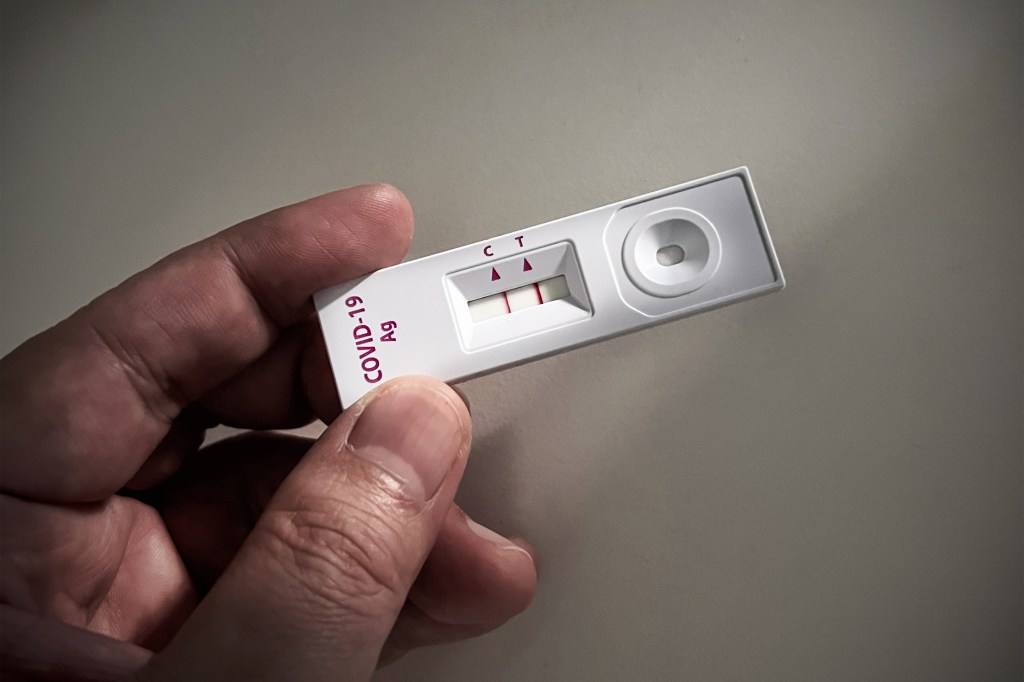Dr. Zsolt Kulcsar, medical director at Lee Health based in Fort Myers, Florida, says what he has learned in recent years is that telemedicine is great, but it also is a little limiting. There is only so much one can solve via a video interaction.
THE PROBLEM
“When the first wave of COVID-19 kind of died down, we met with all of our heads of departments, including cardiology, pulmonary and other key service lines, and we asked them about the limitation of that telehealth interaction,” he recalled.
“What we learned is that we needed data,” he continued. “We couldn’t make data-driven decisions because we didn’t have blood pressures, we didn’t have oxygenation saturations, we didn’t have weights, we didn’t have the data that goes with the clinical decision-making.”
The caregivers only had the patient, and they were able to examine a few things via video, but they did not have that supporting data to drive decisions and management.
That’s where remote patient monitoring came in – delivering devices into the home that can collect clinical data, including blood pressure, oxygen and weight. But more important to Kulcsar, RPM also could collect questionnaires from patients that could help detect early clues of an exacerbation, decompensation or deterioration.
“The program we built here is an RPM shop, and it has the tools we need to collect that data,” he said. “That was important pre-COVID, and it’s important even more so post-COVID.
“There is a term called ‘virtual first’ that we use,” he added. “For example, a patient would be in their living room and ping the doctor to let them know they have a specific condition they are concerned about, and they’re wondering what should they do about it?”
“Our digital footprint all of a sudden expanded from more of a passive monitoring program to monitoring plus intervention.”
Dr. Zsolt Kulcsar, Lee Health
Patients can do this from their living room, as opposed to driving to urgent care or the emergency department. Then, if they need to drive to the urgent care or ER, they’re told to do so.
“To go even further, some patients don’t want to go into the office and sit in a waiting room,” said Jonathan Witenko, system director of virtual health and telemedicine. “Then there are patients who want to be seen and have that relationship with their physician. So, it’s also a little bit of what is the patient preference and what is the patient appetite, and figuring out what is right for the patient.
“Telehealth isn’t meant to just be a replacement for in-person visits – it’s a complement,” he continued. “After someone is seen by their primary care physician, they can use telehealth to check in and spot-check, so the patient doesn’t need to physically come into the office as much, but they still can get the personalized care they need to help with their condition.”
PROPOSAL
Lee Health’s remote patient monitoring technology and services vendor is Health Recovery Solutions.
“They’re a high-performing vendor and forward-thinking,” Witenko contended. “They can help deliver technology and set it up in the patient’s home. This helps us collect that data-driven information we need to provide the patient with optimal care when and where they need it.”
Kulcsar reported that the health system was able to get up and running two days after Hurricane Ian passed through the community in September 2022 and continue monitoring patients’ conditions.
“Our digital footprint all of a sudden expanded from more of a passive monitoring program to monitoring plus intervention,” he recalled. “Those interventions are really what matters to our health system to keep people in the home or transition from the hospital into the home and to do that safely.
“We were helping to oversee the data and then escalating it to the appropriate specialists,” he added. “We’re also helping to handle those situations in-house.”
MARKETPLACE
There are many vendors of telemedicine technology and services on the health IT market today.Healthcare IT Newspublished a special report highlighting many of these vendors with detailed descriptions of their products.Click hereto read the special report.
MEETING THE CHALLENGE
Health Recovery Solutions is able to feed information into Lee Health’s electronic health record, Epic, so all providers involved in patient care are able to know a patient’s entire clinical record and the continuity of care is present throughout the entire process.
“To add to that, I could call a cardiologist or text message them that their patient’s blood pressure or weight went up over the last few days, and have them take a look and see what they think is clinically worrisome,” Kulcsar said. “And if something is an issue, we can coordinate services within the home, because everyone is able to see what we’re seeing.
“We have a full clinical team, including someone who does daily intake interactions with patients,” he continued. “There is a customer service representative and three nurses who do the day-to-day analysis of the data and make escalations.”
“Telehealth isn’t meant to just be a replacement for in-person visits – it’s a complement.”
Jonathan Witenko, Lee Health
Lee has a clinical team of two advanced providers and a medical director to oversee the data, coordinate the care and reach out to coordinating specialists and internists.
“We can just act on it,” Kulcsar explained. “We see it. We get alerted and we make a plan.”
Lee Health has officially received its first payment for RPM services rendered. The services rendered via the RPM team are billed and have been reimbursed.
RESULTS
Lee Health is sending fewer people to hospitals and emergency departments.
“A few months ago, about 17% of our remotely monitored patients needed a higher level of care,” Kulcsar reported. “Now we’re hovering around the 3% to 5% range. We’ve been able to keep people in their homes and coordinate that care.
“We’ve also partnered with DispatchHealth, which delivers care directly to the patient’s home,” he continued. “They can do blood draws, X-rays and deploy medications, and that helps us a lot.”
Surveys show Lee has highly engaged patients who are very satisfied with their overall care, equipment and the program itself.
“Our vendor said the adherence rate is at 80%, meaning the patients enrolled in the program also get their biometric readings and stick with doing so 80% of the time in a typical month, which is pretty impressive,” Kulcsar added.
USING FCC AWARD FUNDS
Lee Health was awarded $1 million by the FCC telehealth grant fund to help out with its remote patient monitoring program.
“We used these funds for the remote patient monitoring program, the placement of cameras inside of the NICU at each bassinet so family members can see the baby growing and developing while he or she is under our care, and to develop our telehealth infrastructure,” Witenko explained.
“We also are taking steps to position ourselves for the future and be proactive instead of reactive,” he continued. “COVID and Hurricane Ian helped us see challenges and address them, and now we’re working to put those solutions in place.”
The provider organization has laid the groundwork, Kulcsar added.
“We have clinical staffing,” he said. “We have the right technologies and now people are approaching me about other specialties that could benefit from these implementations, such as oncology. We’re looking at different data, responding differently to it, and coordinating with another specialist.
“Now you can get really creative and it helps with digital transformation, as well,” he concluded. “It is step one and two for digital transformation and now the heavy work can really begin.”
Follow Bill’s HIT coverage on LinkedIn: Bill Siwicki
Email the writer:bsiwicki@himss.org
Healthcare IT News is a HIMSS Media publication.
Note: This article have been indexed to our site. We do not claim legitimacy, ownership or copyright of any of the content above. To see the article at original source Click Here















